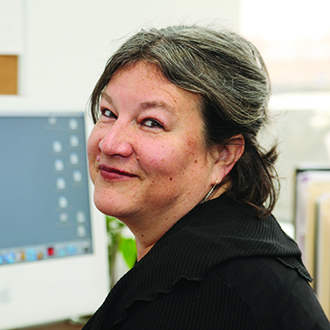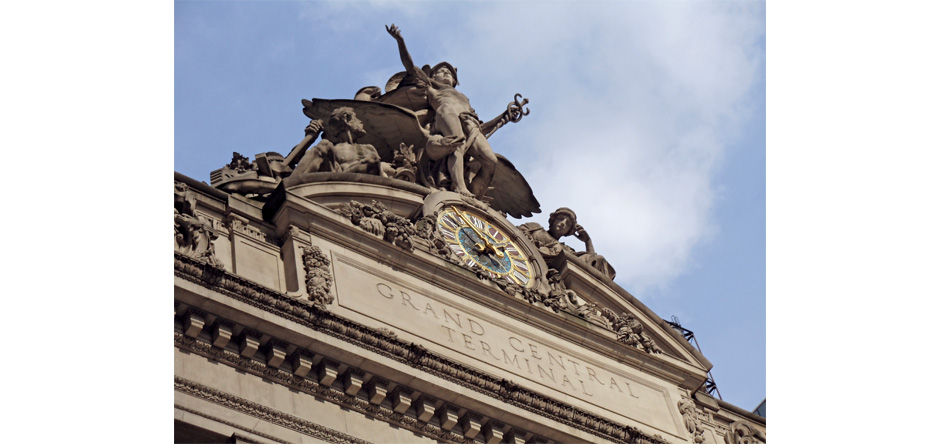Artwork images courtesy Daniel Greene.
Daniel Greene is far from the stereotypical starving artist.
In fact, his recognition, building steadily since the 1950s, includes print and television coverage, international honors and worldwide exhibitions, sales and sought-after expertise.
On a recent afternoon, Greene welcomed WAG into the cavernous barn-studio on his North Salem property, where preparations are well under way for his latest one-man show.
Of course, Greene is confident in his work — after all, it’s a part of more than 700 public and private collections throughout the world — but instead of bluster, we find a low-key charm, a quiet sense of accomplishment.
“I’m extremely fortunate,” Greene says at one point, “through no fault of my own to have a talent that led me to what I love to do.”
And he has been doing it since his Cincinnati childhood.
“I knew from the time I was 4 or 5 years old that I wanted to be an artist, that was what I did best,” he says.
Greene, who began his study of art in Cincinnati, says he left school in his senior year to kick-start his career.
“New York was and is the center of the art world. I knew the best instructors were there, the galleries, the artists. It was a magnet for creativity.”
IN NEW YORK
Greene would go on to study at The Art Students League of New York, later teaching there for many years, as he also did at the National Academy, then the National Academy of Design. Greene witnessed the storied Greenwich Village scene of the 1950s and could be found at The Cedar Tavern, the famed hangout for artists and writers.
It was then, he says, that he was introduced to abstract painting but says “it didn’t seem challenging enough.”
Instead, he further developed his own style, which he calls “classical painting” or “realistic classical painting.”
Indeed, there is a sharpness to Greene’s works, a true-to-life vibrancy that renders the scene immediate.
And that is likely a key reason why he has found such success as a portrait artist.
Greene’s subjects, who normally sit for 10 three-hour sessions for a life-size work, tend to be leaders in fields ranging from government to education, industry to the arts.
“I have met some fascinating people,” he says.
He has painted everyone from prime ministers to governors, actors to authors, college deans to doctors, CEOs to composers.
Over the years, he has done both historic and from-life portraits of former first lady Eleanor Roosevelt and astronaut Walter Schirra, composer Alan Menken and even a few movie characters.
“George Lucas commissioned a number of artists,” he says, to create work inspired by “Star Wars” characters.
Throughout, Greene says, with a laugh, he tries to be fair.
“I’ve painted Democrats and Republicans. I’ve tried to balance it out.”
There have, of course, been interesting moments that offer glimpses into one’s personality.
Greene, for example, tells of working with Dave Thomas, founder of the Wendy’s restaurants.
“He said, ‘Mr. Greene, can I watch you paint my diamond ring?’” he says with a laugh.
When working on his portrait of the late William Randolph Hearst, founder of The Hearst Corp., Greene said he learned a son of Hearst’s lived nearby.
He decided to add a personal touch to the work, asking the son to pose, having his own hand stand in for his father’s.
“When I was finished, I thanked him, and he said ‘I’m glad to do it for Daddy.’”
RAIL INSPIRATION
Though Greene says he’s always been inspired by his surroundings, he has been particularly captivated by the city’s subway system, which he knew was filled with “some marvelous opportunities.”
Greene’s series of subway paintings, perhaps his most accessible work, reached its most widespread recognition during a 2004 exhibition at the New York Transit Museum’s Grand Central Terminal Annex in honor of the subway’s centennial.
“A subway is not where you expect to find art appreciation or beauty,” Greene says.
But his observations of what is such a part of many people’s lives really struck a chord, whether it was in paintings portraying a scene of artful mosaic work or of a beautiful-yet-pensive young woman standing on a platform.
To date, Greene has created 117 works based on the city’s subway system.
A VINTAGE TOUCH
More recently, Greene has been tapping his longtime interest in antiques for subject matter.
“When I lived in New York City, I used to visit antiques stores,” he says of his prop hunting. “I needed to have chairs for my models.”
He also began going to auctions, such as those held at the old Parke-Bernet auction house on the Upper East Side.
“I couldn’t help but notice the bidding was sometimes fast and furious and very agitated. There was a great deal of drama,” he says.
Over the years, his own appreciation, Greene says, was further fueled by the access he got to some lovely homes and offices through his portrait work.
“As a result of painting portraits, I’ve had entrée to some beautiful homes,” he says. He got an education not only in people and personalities but also fine art, antiques and collecting.
His interest remains, with time spent poking along Connecticut’s antiques trail, with friends in the field and with attendance at auctions by Christie’s, Sotheby’s and other New York powerhouses.
His latest series — which will be the subject of a show opening next month at Gallery Henoch in Manhattan — features auction scenes created by using models from Westchester and Fairfield counties.
“I couldn’t really ask the people who were at the auction house to come out and pose for me,” he says.
Instead, Greene recreates or creates scenes inspired by what he sees.
On this recent day, Greene is putting finishing touches on “Two O’Keefes,” an oil-on-canvas that will be featured in “At the Auction.”
He is clearly at home in his longtime studio.
“This is the kind of light artists have been working in for centuries,” he says of the natural north light streaming in from skylights and high windows.
AT HOME, WITH ART
Whether working with oils or pastels, Greene still keeps a busy schedule. He’s been represented by Gallery Henoch for decades, with Cavalier Galleries in Greenwich also among those that carry the work he completes while nestled into the space carved out of a onetime dairy farm.
“I moved up here 35 years ago from New York City, and I looked all over for a place I could work and could accommodate the students I would teach,” he says.
He lives in the carriage house, the centerpiece of the generous property, with his wife, fellow artist Wende Caporale.
Her studio is the heart of the home addition, an incredible space of glass walls and balconies that Greene says “replicates a beautiful studio I had in New York City on 67th Street.”
“When I decided to move up here, I missed that studio,” he says of the seven-room duplex. Today, the space is multifunctional. When not used as a studio, it provides an elegant, eclectic setting for entertaining.
With barn, carriage house and ample workspace, Studio Hill Farm is quite the artist’s retreat — and the place where Greene continues to welcome students each summer.
THE WORK CONTINUES
Artists from around the world come to him for his expertise, which has been amply recognized through his publications, instructional videos and awards.
The Pastel Society of America elected Greene to the Pastel Hall of Fame in 1983. In 1994, he presented a pastel portrait of Eleanor Roosevelt to Hillary Rodham Clinton in a special White House ceremony. In 1995, the American Society of Portrait Artists presented him with the John Singer Sargent award for “lifelong dedication to the achievement of excellence in portraiture.” In 2003, he was the annual honoree of the Salmagundi Club in Manhattan, presented with the organization’s Gold Medal.
And these are just a small sampling of decades of honors.
The honors, though, are not crowding the studio.
No, this is the place to focus on the task at hand.
“I used to have a very heavy schedule, teaching around the country, other countries,” he says. He will still travel to offer master classes but more often the students, tens of thousands over his career, come to North Salem.
There they find a well-established artist surrounded by his creations. And whether these works depict carnival booths, pool players or richly textured still lifes, they all attest to Greene’s moving ever forward.
As he says, “Each painting leads to another.”
Daniel Greene’s solo exhibition, “At the Auction,” will run April 2 to 25 at Gallery Henoch in Manhattan, with an opening from 6 to 8 p.m. April 2. For more, visit danielgreeneartist.com.





